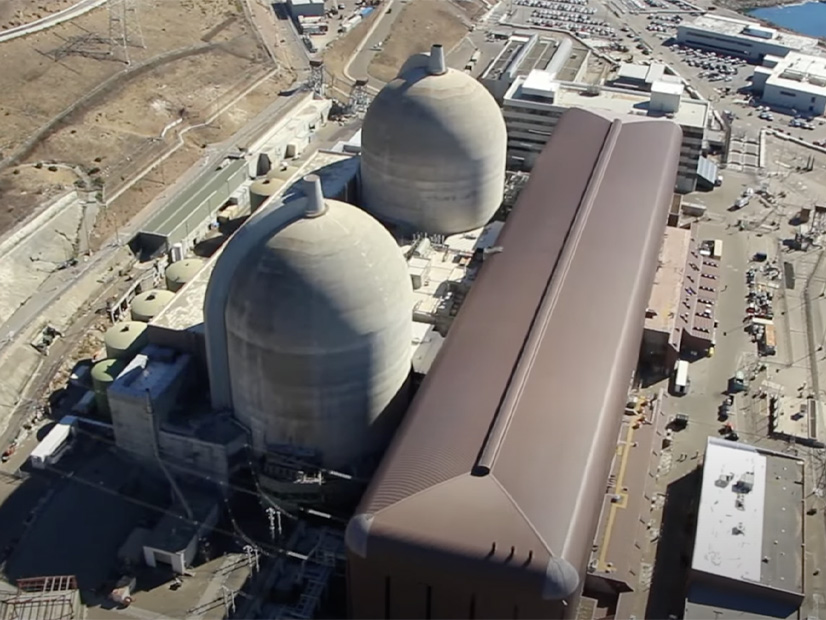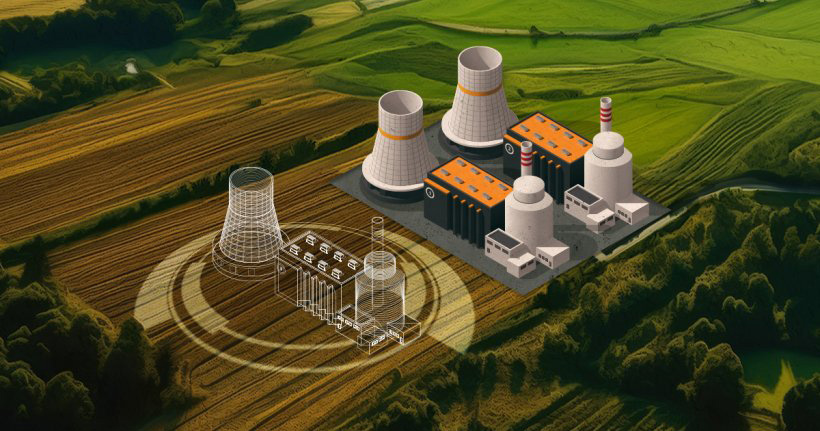
The Biden administration wants to jumpstart a “nuclear deployment ecosystem” by getting 35 GW of new nuclear power online or under construction by 2035 and then build to a steady pace of deploying 15 GW per year in the U.S. and globally by 2040.
The Biden administration on Nov. 12 rolled out a new plan to triple nuclear power in the U.S. by 2050, with a multipronged strategy of building new large and small modular reactors, adding power to and extending the life of existing plants, and bringing recently closed installations back online.
The U.S. has 94 reactors in operation at 54 sites in 28 states, most of them built in the 1970s and 1980s, the plan says. But the Department of Energy estimates the country will need 200 GW of new nuclear capacity “to keep pace with future power demands and reach net-zero emissions by 2050,” according to a Nov. 12 blog accompanying the release of the report.
The White House wants to jumpstart a “nuclear deployment ecosystem” by getting 35 GW of new nuclear power online or under construction by 2035 and then build to a steady pace of deploying 15 GW per year in the U.S. and globally by 2040 ― targets the report calls “ambitious yet achievable.”
For example, the report notes that “uprating” existing plants ― increasing their capacity through plant upgrades and the use of advanced fuels ― could increase their power output by 10% to 20%. Other DOE research suggests building new reactors at existing plants could add 60 GW or more of new capacity.
DOE also supports the development of SMRs through its Advanced Nuclear Reactor Demonstration Program, which received $2.5 billion in the Infrastructure Investment and Jobs Act. The department’s Loan Programs Office in September announced a $1.52 billion loan to Holtec to support the reopening of the 800-MW Palisades nuclear plant in Michigan.
Nuclear currently provides about 20% of all U.S. power and close to half of its carbon-free electricity, and interest in the clean, 24/7 power that reactors produce has intensified as companies like Microsoft, Google and Amazon look for power for their hyperscale data centers.
In October, Google signed a first-of-its-kind contract to buy power from a series of SMRs being developed by Kairos Power, and Microsoft is partnering with Constellation Energy on the controversial reopening of a reactor at Three Mile Island. (See Constellation to Reopen, Rename Three Mile Island Unit 1.)
The report notes that “a diverse set of technologies” will be needed to meet the different needs of customers and calls for “customers with large power needs and carbon-free commitments to work creatively with utilities to help share project risks commensurate with resulting benefits of successful deployment.”
The Need for Standardization
The report also makes an argument for nuclear expansion as critical for national security.
The majority of new reactors built worldwide in the past decade have been either Russian or Chinese, the report says. “It is imperative that the United States and allied countries compete effectively to supply the world with clean and safe nuclear energy. Yet, countries abroad typically want new reactor technologies demonstrated in the supplier country before building them in their own country.
“Domestic deployments will enable exports and provide a pathway for the United States to regain leadership in the international nuclear energy market and supply chain.”
A major challenge moving forward, for both large-scale and SMRs, will be overcoming investor and utility concerns about time and cost overruns, with the report calling for better standardization of reactor designs.
The existing U.S. nuclear fleet did not move down the cost and time curves “in large part because most plants were built with unique, bespoke designs,” the report says. “The 94 currently operating reactors in America represent over 50 different combinations of reactor types, nuclear steam supply systems, models, power levels, containment types and balance-of-plant architecture.”
The next generation of reactors “must feature greater standardization, along with integration of modern design, project management and construction techniques, and a wealth of lessons learned from past deployments,” the report says.
Out but not Down
Any plans by the Biden administration would appear to be moot given the incoming Republican administration, but nuclear energy is one of the rare points of bipartisan agreement, as exemplified by the passage of the Accelerating Deployment of Versatile, Advanced Nuclear for Clean Energy Act of 2024 (S. 870), signed by President Joe Biden in July.
The law aims to accelerate the licensing of new reactors with provisions that reduce licensing fees for SMRs and require the Nuclear Regulatory Commission to streamline licensing for microreactors and cut the timelines for licensing new reactors planned for existing plant sites.
The report lists 30 actions the U.S. government can take “within existing statutory authorities,” along with recommendations for industry and customers. The NRC has issued its own License Renewal Roadmap to streamline reactor relicensing, but the report encourages plant owners to coordinate with the commission on the timing of their relicensing applications “to produce a more consistent workload for NRC … and ensure resources are in place and priorities are shifted as necessary.”
The administration also is following through on a U.S. commitment to the Declaration to Triple Nuclear Energy made by more than 20 countries in 2023 at the 28th U.N. Climate Change Conference of the Parties (COP28) in the United Arab Emirates.
Speaking at COP29 in Azerbaijan on Nov. 11, White House Senior Adviser John Podesta acknowledged that President-elect Donald Trump would pull the U.S. out of the Paris Agreement again, but that would not stop states, cities and businesses from continuing their commitments to cut emissions to limit global warming to 1.5 degrees Celsius.
“The economics of the clean energy transition have simply taken over,” Podesta said in a White House release. “New power generation is going to be clean. The desire to build out next generation nuclear is still there. … The hyperscalers are still committed to powering the future with clean energy, including safe, reliable nuclear energy. … All those trends are not going to be reversed.”
Trade associations sought to focus on the economic and bipartisan appeal of nuclear in their reactions to the report.
“Nuclear generation is uniquely positioned to help the United States achieve our climate and national security goals, while creating a reliable energy system to meet growing demand,” said Maria Korsnick, CEO of the Nuclear Energy Institute. “We look forward to continuing to advance strategies that extend the lives of existing nuclear reactors, usher in a new era of advanced technologies and support a global marketplace for U.S. exports.”
While welcoming the report’s aggressive targets, Judi Greenwald, executive director of the Nuclear Innovation Alliance, said the “next steps are up to the incoming administration and Congress. We look forward to continuing bipartisan and public-private cooperation to build on our shared accomplishments and increase investment and innovation in the next generation of advanced nuclear energy.”



